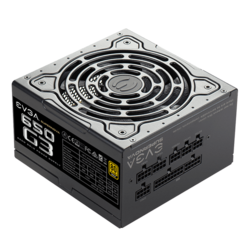Introduction to the importance of upgrading your Power Supply units
The power supply unit (PSU) is a critical component in any computer system, as it converts the AC power from the wall outlet into DC power that can be used by the computer’s components. Upgrading your PSU can have a significant impact on the performance, stability, and reliability of your computer.
Here are some reasons why upgrading your power supply unit is important:
Improved performance:
A higher-wattage PSU can provide more power to your components, allowing them to run at their full potential. This can result in improved performance in CPU-intensive tasks such as gaming, video editing, and 3D rendering.
Stability:
A higher quality PSU with better voltage regulation can provide more stable power to your components, reducing the risk of system crashes, freezes, and other instability issues.
Reliability:
A good quality power supply unit can help protect your components from power surges, spikes, and other electrical problems that can damage your hardware.
Expandability:
If you plan on upgrading your computer with additional components, such as a more powerful graphics card or additional hard drives, you may need a higher-wattage PSU to support the increased power demands.
Energy efficiency:
Upgrading to a more efficient PSU can help reduce your energy bill, as it will waste less power and generate less heat.
Overall, upgrading your power supply unit is an important consideration for anyone looking to improve the performance, stability, and reliability of their computer system.
Benefits of upgrading Power Supply units
Upgrading your computer hardware can have several benefits, including:
Improved performance:
Upgrading to a faster CPU, more RAM, or a better graphics card can significantly improve your computer’s performance, allowing you to run more demanding applications and games with higher frame rates and smoother gameplay.
Enhanced productivity:
Upgrading to a larger monitor or multiple monitors can help you increase your productivity by giving you more screen real estate to work with. Similarly, upgrading to a faster SSD or more storage space can help you work more efficiently by reducing load times and enabling you to store more data.
Longer lifespan:
Upgrading to newer hardware can help extend the lifespan of your computer, as newer components are often more energy-efficient, generate less heat, and are less prone to failure.
Improved reliability:
Upgrading to higher-quality hardware can help improve the reliability of your computer by reducing the risk of hardware failure, system crashes, and other issues that can lead to downtime and lost productivity.
Better gaming experience:
Upgrading to a more powerful graphics card or a faster CPU can help you enjoy a better gaming experience by allowing you to play more demanding games at higher settings and resolutions.
Increased resale value:
Upgrading your computer hardware can also increase its resale value, making it easier to sell when it’s time to upgrade again.
Overall, upgrading your computer hardware can help you get more out of your computer, improve your productivity, and enhance your overall computing experience.
Tips for choosing a new Power Supply Unit
Choosing a new power supply unit (PSU) can be a daunting task, but here are some tips to help you make an informed decision:
Determine your power needs:
The first step is to determine the power needs of your computer. You can use an online power supply calculator to estimate the minimum power requirements for your components, including your CPU, graphics card, and other peripherals.
Consider the efficiency rating:
Look for a PSU with a high-efficiency rating, such as 80 Plus Bronze, Silver, Gold, or Platinum. A higher efficiency rating means that the PSU wastes less power, generates less heat, and is more environmentally friendly.
Choose a reputable brand:
Choose a power supply unit from a reputable brand with a good reputation for quality and reliability, such as Corsair, Seasonic, EVGA, or Antec. Avoid no-name or budget brands that may be of lower quality and less reliable.
Check the warranty:
Look for a PSU with a long warranty, ideally five years or more. This can provide peace of mind and ensure that you are protected in case of any issues.
Check the connectors:
Make sure that the PSU has the necessary connectors for your components, including your motherboard, CPU, graphics card, and other peripherals. It’s also a good idea to look for a PSU with modular cables, which can help reduce clutter and improve airflow in your case.
Consider the noise level:
Look for a PSU with a low noise level, as a noisy PSU can be distracting and may interfere with your work or gaming experience.
By following these tips, you can choose a high-quality and reliable power supply unit that meets your power needs and enhances your computing experience.
Installation and setup tips
Once you have chosen a new power supply unit (PSU), here are some tips for installing and setting it up:
Power off and unplug your computer:
Before installing the new PSU, make sure your computer is powered off and unplugged from the wall outlet to avoid any electrical shock or damage.
Remove the old PSU:
Open your computer case and remove the old power supply unit by unscrewing it from the case and disconnecting all the cables.
Install the new PSU:
Install the new PSU by placing it in the same location as the old one and screwing it into place. Connect all the cables to the appropriate connectors on the motherboard, CPU, graphics card, and other peripherals.
Test the new PSU:
Once you have installed the new power supply unit, plug your computer back in and turn it on to ensure that the new PSU is working properly. Check the BIOS settings to ensure that the voltage readings are correct and that the system is stable.
Cable management:
Proper cable management is essential to ensure good airflow and reduce clutter in your computer case. Use cable ties or a cable management system to organize and route the cables neatly.
Monitor the temperature:
Keep an eye on the temperature inside your computer case, especially if you have installed a higher-wattage power supply unit or other new components. Use temperature monitoring software to check the temperature readings and ensure that they are within safe limits.
By following these tips, you can ensure that your new PSU is properly installed and set up for optimal performance and reliability.
Conclusion
Upgrading your power supply unit (PSU) can have several benefits, including improved performance, enhanced productivity, longer lifespan, improved reliability, better gaming experience, and increased resale value. When choosing a new PSU, it’s important to determine your power needs, consider the efficiency rating, choose a reputable brand, check the warranty, check the connectors, and consider the noise level. When installing and setting up the new PSU, it’s important to power off and unplug your computer, remove the old PSU, install the new PSU, test it, manage the cables properly, and monitor the temperature to ensure optimal performance and reliability. By following these tips, you can make an informed decision when choosing a new PSU and ensure that it is properly installed and set up for optimal performance and reliability.

